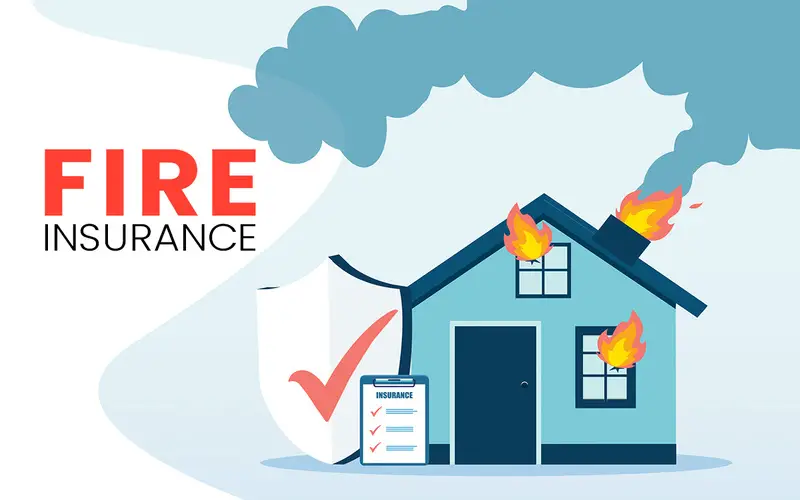What’s fire insurance?
Fire insurance protects against damage and losses caused by fires. Fire protection is included in most plans; however, homeowners can obtain additional coverage if a fire damages their property.
Purchase supplementary fire coverage to cover property replacement, repair, or rebuilding costs over the property insurance policy maximum. This insurance usually excludes war, nuclear threats, and other calamities. Fire damage produced intentionally is usually not covered.
How Insurance for Fires Works
A typical homeowner’s policy includes this insurance. Homeowners insurance protects against loss or damage to covered property, such as houses and valuables. Property insurance covers the inside and outside of the residence and any goods stored on the property.
Policies may also cover property injuries. Your mortgage lender may need homeowner’s insurance before approving your loan. Even if it’s optional, homeowners insurance can protect you.
Insurance for fires is also available separately. A policyholder is protected from many fire sources. This covers flames caused by electricity, lightning, natural calamities, and poor wiring with gas explosions. The coverage may also cover ruptured water tanks and pipelines.
Fire Insurance Example
No matter where the fire starts, most insurance covers it. Fire coverage limits vary based on the reason. The insurance compensates the policyholder for damages on a replacement cost or actual cash value (ACV) basis.
If the home is lost, the insurance provider may cover its current market value. Insurance typically compensates for lost items at market value, with a maximum on the total payout based on the home’s worth.
If a property is insured for $350,000, the contents are usually covered for 50% to 70% of the insurance value or $175,000 to $245,000. Policies sometimes limit compensation for expensive products, including paintings, jewels, gold, and fur coats.
Special Considerations
A policyholder should assess their home’s worth annually to see whether they need more coverage. Remember that insurance coverage is limited to the actual worth of your house. Insurance firms may offer separate plans for rare, valuable, and irreplaceable things not covered by insurance.
Homeowners’ insurance plans often cover fire damage, including repairs and relocation fees.
Sometimes, you want additional coverage. A homeowner may need insurance for fire if their property has valuable objects not covered by conventional insurance. Insurance companies are only liable for the policy amount, not the damage or loss suffered by the property owner.
Insurance can cover property replacement or repair expenses above homeowners insurance limits.
The insurance covers property losses due to fires. If the fire made living conditions unlivable, they often covered additional costs. Lastly, they cover damage to personal property and surrounding structures. To simplify fire damage assessment, homeowners should document their property and possessions.
This insurance covers smoke and water damage and typically lasts for one year. Homeowners generally renew their insurance policies under the same conditions.
Is it different from house insurance?
Insurance for fires covers fire-related expenditures, whereas homeowners insurance covers many additional dangers. Homeowners insurance usually covers fire damage, but a separate Insurance for Fires policy may cover more.
What does this insurance exclude?
Insurance policies for fire do not cover intentional fires. Because insurance for fires only covers damages caused by fires, it does not cover any other kind of loss.
What kind of property does this insurance cover?
Insurance for fires usually covers home and possession fire damage. This covers candle, grease, electrical, and other fire-damaged property.
Final Remarks
A conventional homeowners insurance policy will cover many homeowners’ fire-related damages to the house structure and personal items. Ask a financial counselor about a stand-alone Insurance for Fires policy.
Conclusion
- Insurance for fires covers fire-damaged property.
- A conventional homeowners policy may cap insurance for fires at less than the losses.
- Fire insurers might compensate for damages on a replacement cost or actual cash value (ACV) basis.
- Many home insurance plans cover fire, but others demand more.













































